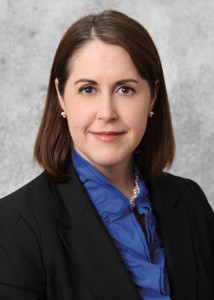Growth in online ed comes from on-campus students
Learning online is as natural for Emily Mochel as texting on her smartphone. Mochel, a sophomore nursing student from Beresford, took her first

Two Elkton High School students took advantage of online classes as members of the dual-credit program.
online class as a high school senior. She said it took her a month to become comfortable with the technology and found using it to be “pretty simple.†She took medical terminology as a freshman and took nutrition this past spring.
Medical terminology is only offered online. Realizing “nursing has a crazy schedule, I wanted to do (nutrition) online so I can do it whenever I wanted.â€
Even in a lab-heavy major like nursing, Mochel expects some of her remaining credits will come via the Internet and expects her school to offer it.
Not surprisingly, online education continues to grow throughout higher education, including among traditional college students who live on campus.
“It used to be that the majority of students taking online classes were adults who were unable to commit to being on campus
because of other life obligations. Now, it is younger students,†said Lindsey Hamlin, director of Continuing and Distance Education at SDSU.
Technology has made online education more convenient and students are comfortable using technology.
“If it is not offered at the school they’re attending, they can get it elsewhere. The transfer of credits is so much more prevalent now. It is our job to make sure it is high quality.â€
An emphasis on quality
Hamlin said SDSU does several things to set itself apart from the myriad schools that offer online classes.
“We typically limit the number of students per section at 35 for undergraduates to keep a good student-faculty ratio. Because SDSU’s class sizes are relatively small, we have a good amount of interaction between students and faculty.
“We also insure the curriculum is a high-quality curriculum that mirrors what is offered in the classroom. Faculty create the syllabi. We make sure technology is being used in a way that will achieve the same outcomes that face-to-face will,†said Hamlin, who took her position two years ago after Gail Tidemann retired.
Differences exist even within the Board of Regents system in South Dakota.
Sarah Ellis, a nontraditional student who has taken all of her classes online, said, “One really great benefit of being an online student is you can take courses from any SDBOR school at any time … I’ve had semesters where I’d have a class at SDSU, DSU and USD, but be able to log in on the same D2L page.â€
D2L, Desire2Learn, is the Regents’ Web portal for online education.
Experiencing a difference
“Initially, there was a learning curve with D2L. Every professor uses D2L a little differently,†said Ellis, whose first online classes came in 2011 as a 31-year-old working as a registrar at St. Mary’s Hospital in Pierre. The classes were through Dakota State, from which she received an associate degree in general studies.
She continued online in pursuit of a bachelor’s degree and eventually transferred to SDSU, where she received a degree in interdisciplinary studies and a minor in studio arts in August 2015 after studying abroad in Italy.
Now, she is enrolled in the master of communication studies program with the journalism department, another online degree.
“I loved the change to SDSU. It was just a better fit for me to be through SDSU. There was more proactive professor involvement. Online students don’t feel like an afterthought through SDSU. SDSU is more responsive and involved. Plus, the Office of Continuing and Distance Education is always there for us to answer questions and give help,†Ellis said.
SDSU has been offering online classes since 1998, and just as electronic technology has exploded, so have online course offerings.
For fiscal year 2016, which covers both semesters of the recently completed school year, SDSU students took nearly 46,000 credit hours via the Internet, a gain of 10 percent from the prior year. Even more impressive is the 41 percent gain in number of courses offered online. That now stands at 905.
RN Upward Mobility lead the way
SDSU offers a fully online master’s degree in 13 programs, the most recent being agricultural education, which started in fall 2015. In addition, there are six majors, nine minors and an associate degree in general studies.
Hamlin, the Continuing and Distance Education director, said online programs are added based on student interest, market demand, and the availability of the degree at competing institutions. “We monitor what other schools offer and the market demand for the degree. If it is a program we currently offer and we think the quality and rigor would be well-suited for online, we will recommend it†to the corresponding SDSU department.
The College of Nursing was one of the first at SDSU to create a fully online degree with its Upward Mobility RN to BSN program.
Established in 1979 as a location-based program for associate or diploma nurses to earn a bachelor’s degree, RN Upward Mobility went to Web and satellite delivery in fall 2000 and fully online in 2001. Also in 2000, the college transitioned master’s degree specializations from entirely classroom to online.
Among those in the RN Upward Mobility program is Brian Holmvig, who earned his bachelor’s in May at age 48.
A parts and service manager with a Ford dealership in Brainerd, Minnesota, he lost his job in the economic downturn of 2008 and started nurse training at the local community college in 2009. By 2013, he had a two-year nursing degree, paramedic certification and was working as a flight nurse with Sanford Health in Bemidji, Minnesota.
But he wanted his four-year degree and by this time was back in the swing of being a college student.
He looked at online programs closer to home but went with SDSU because of its customer service. “My instructors now are absolutely wonderful. Online can be hard, but when you have instructors you can call or can email, and who give advice and feedback on papers, it makes all the difference. The school has been absolutely wonderful to work with. I’d definitely recommend South Dakota State for anyone,†Holmvig said.
Today’s students expect online
Hamlin said individuals such as Holmvig and Ellis will continue to be a sector of the online education market, but a greater proportion will be students like Mochel who took online classes in high school and expect to do so in college as well even though they live on campus and earn classroom credits as well.
About 60 percent of SDSU students take an online class, Hamlin said. It could be for convenience or to take a class they couldn’t otherwise fit in their schedule. Sometimes it’s to avoid dealing with a winter day in South Dakota, especially for commuters.
At any rate, today’s student expects to be able to learn from the electronics that have become indispensable to them.
Dave Graves








